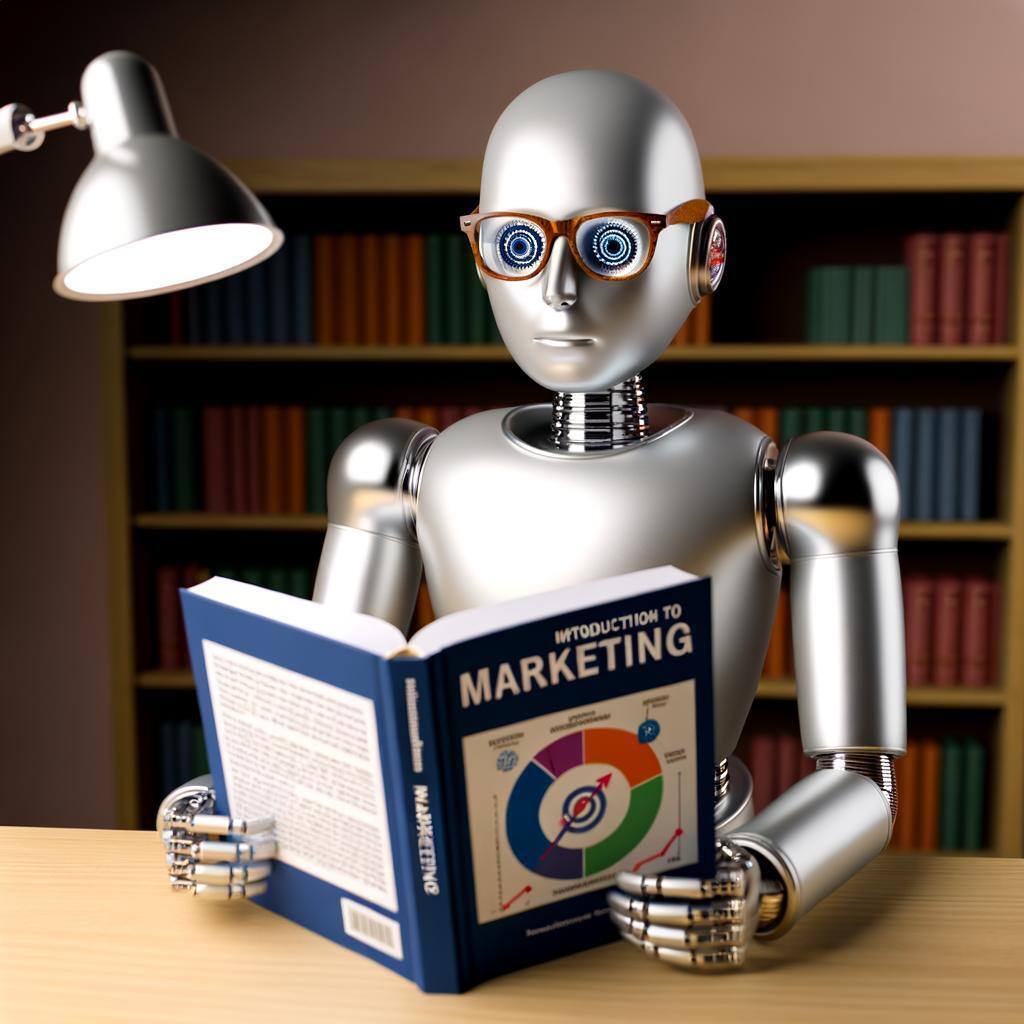A Founder Update from Jason Nash (CPO) and Netanel Eliav (CTO) at Jam 7
The Moment the Engine Turns Over
For the past several months, Netanel Eliav (our CTO) team and I have been working intensely on something we believe will fundamentally reshape how businesses approach marketing execution. Today, I'm excited to share that we've reached a critical milestone: AMP MVP0.
This isn't just another product launch announcement. MVP0 represents the moment when theory becomes testable reality, when the engine you've built finally turns over and you can begin the real work of learning, validating, and ultimately scaling. We have a LOT of work to do before we get there.
AMP™, the Agentic Marketing Platform™, MVP0 is now a ‘living system’, ready to help us prove our hypothesis in the market. More importantly, we're now seeking early evangelists to help us shape the future of marketing through agentic AI.
Building with Discipline, Not Just Momentum
From day one, Netanel and I committed to building AMP using the principles outlined in The Lean Startup and The Startup Owner's Manual, combined with over 30 years of product experience (yes, I am that old!). This meant resisting the temptation to build based on our opinions or the latest AI hype cycles. Instead, we've focused on identifying, documenting, and systematically testing our core assumptions.
We've used internal checklists to structure our experiments. We've mapped out hypotheses before writing a single line of production code. We've forced ourselves to define what success looks like at each stage before moving forward.
This discipline has been essential because AMP isn't built to solve today's problems, it's built for the market realities of 2028. As Steve Jobs famously said about anticipating where the market is headed, we're skating to where the puck is going, not where it is today.
The Vision: Your Always-On Marketing Brain
AMP will be the AI-powered marketing brain for ambitious B2B technology companies. Today, marketing teams are overloaded with tools, limited resources, and rising expectations. AMP changes this by unifying brand, product, and market data into a living knowledge graph, then applying agentic AI to generate strategies, campaigns, and content that meet or exceed human quality.
Our goal is to enable under-resourced teams to deliver consistent, personalised, on-brand content and strategic plans that strengthen their market position and accelerate growth.
In three to five years, B2B marketing teams using AMP will produce high quality with less headcount x10 faster. They will rely on intelligent agents to run most planning and content creation, allowing humans to focus on creativity and strategic decisions. Companies not using agentic marketing will struggle to compete on personalisation and speed.
Gartner predicts that by 2026, 60% of B2B marketing will be driven by agentic systems.
The Three Hypotheses We're Testing
With MVP0 in production, we're now running structured experiments around three critical hypotheses:
1. The Value Hypothesis
Traditional marketing automation creates tool vomit. Every workflow needs custom configuration. Every customer needs bespoke setups. Every change requires manual updates across a sprawling ecosystem of disconnected platforms. The 2024 Marketing Technology Landscape now contains 14,106 marketing tools—a 27.8% year-over-year increase from 11,038 tools in 2023, representing a 13-year compound annual growth rate of 41.8%. Many are fuelled by VC funding, creating copycat products that imitate and copy rather than truly differentiate or look for blue ocean space.
AMP flips this model. We've built a mesh of expert agents: a SEO Agent, a Content Agent, a Research Agent, a Customer Agent and a Strategy Agent. These agents are subject matter experts using the best frameworks and tools to do the job. They don't have any customer-specific data that serve multiple customers simultaneously through dynamic knowledge retrieval. When Reddit becomes important for SEO, we update the SEO Agent once, and every customer benefits instantly.
We're measuring time-to-deliverable, quality scores, and cost-per-output to validate whether this architecture delivers real value at scale.
2. The Growth Hypothesis
Can each new AMP customer make the entire platform smarter, creating a self-reinforcing growth engine?
This is where AMP becomes genuinely different. Every customer we onboard doesn't just use the platform, they improve it for everyone else. New brand guidelines, new industry contexts, new competitive landscapes all feed back into our centralised Knowledge Base.
The more customers we serve, the smarter our agents become. The smarter our agents become, the faster we can onboard new customers. This creates a flywheel that competing platforms simply cannot replicate because they're building custom agents per customer.
We're tracking cross-customer learning rates, agent performance improvements over time, and onboarding velocity to prove this hypothesis.
3. The Customer Creation Hypothesis
Can Jam 7 reliably attract and retain B2B tech businesses that see the value in replacing fragmented tools with a unified, agentic system?
The market in 2025 is asking for better workflow tools. But by 2027, the market will be asking for fewer, smarter agents that handle more. We need to validate that we can find, educate, and convert customers who understand this shift before it becomes obvious.
What AMP Actually Does: Features That Solve Real Problems
Ambitious B2B technology companies are trying to execute sophisticated marketing with small teams and shrinking budgets. Marketing teams juggle disparate tools and spend excessive time collecting information from separate systems, often disconnected from sales needs, making it hard to align messaging with market needs and produce quality content at scale.
AMP solves this with an integrated suite of capabilities:
Core Platform Features
Agentic Content Creation
Leverages advanced AI to produce human-level content across blogs, social media, ads, video scripts, and case studies. Content aligns perfectly in tone, style, and relevance to audience segments, significantly reducing revisions and accelerating publication. This is not content assistance. This is content that replaces the need for junior writers entirely.
Brand Messaging Quality Assurance
AI-driven assessment validates marketing messages for brand alignment, product accuracy, optimal tone, persuasive cognitive biases, and SEO effectiveness. Every piece of content passes through this quality gate to ensure consistent excellence and resonance with targeted audiences.
Strategic Marketing & Campaign Planning
Implements the SOSTAC framework (Situation, Objectives, Strategy, Tactics, Action, Control) with AI guidance, enabling comprehensive strategic alignment. No more analysis paralysis, the platform structures your thinking while allowing creative freedom.
ABM Precision Audience Understanding
Automates analysis of customer data to identify segments, behaviours, and pain points. Generates rich personas for targeted marketing without expensive research agencies. Tracks preferred channels and integrates with market buzz monitoring.
Buzz Monitoring & Market Intelligence
Real-time monitoring of online conversations, competitive moves, and customer sentiment informs agile strategies and identifies opportunities before competitors see them.
Personalised Omni-Channel Distribution
Distributes tailored content across owned, earned, and paid channels at optimal times, maximising engagement and conversions based on AI-driven timing predictions.
Actionable Marketing Intelligence
Dashboards with real-time analytics, attribution, and ROI measurement across campaigns. Finally, marketing leaders can justify spend and prove contribution to pipeline.
From Human Teams to Agent Teams
Here's the bigger picture: In the next few years, there will be more agents than people in most organisations.
Just like human teams, agents need alignment, clear communication, role definition, and effective management. Without these, you don't get productivity, you get chaos. You get agent sprawl, duplicated efforts, conflicting outputs, and maintenance nightmares.
Most platforms today are creating tools for building individual agents. That's like giving every employee their own language and expecting the company to function smoothly. It doesn't work.
AMP is a platform for agent alignment. Our agents operate like a high-performing team that works 24×7: coordinating, collaborating, and executing with institutional memory that persists even when people leave.
"The technical architecture of AMP is what excites me most," says Netanel Eliav, our CTO. "We're not building a collection of tools, we're building an intelligent mesh where agents communicate, learn from each other, and adapt in real time. The ReAct framework (a method for agents to reason through problems step-by-step) combined with dynamic RAG (Retrieval-Augmented Generation, which lets AI pull relevant information from our knowledge base in real-time) means our system improves autonomously with every customer interaction. This is SaaS-level scalability applied to AI agents, and I genuinely believe it's years ahead of what most platforms are attempting. We're solving the scalability trap that will plague custom agent platforms in 2026 and 2027."
Why AMP Wins: The Competitive Moat
Our competitive advantage comes from four structural moats:
1. Mesh Architecture
Most platforms are building workflow tools with agent add-ons. We're building agents-first with workflow orchestration. The architecture is inverted, and ours is significantly harder to copy.
2. Knowledge as a Service
Dynamic RAG + ChromaDB + MCP tools = agents that learn and adapt without re-training. Competitors are hard-coding knowledge into prompts, which creates brittle, unmaintainable systems.
3. Multi-Customer Optimisation
Every customer we onboard makes the agents smarter for everyone. N8N workflows don't benefit from cross-customer learning. This network effect compounds over time.
4. SaaS Economics
We can onboard customers faster and cheaper because we're not building custom agents. Our unit economics improve with scale, theirs don't. We're targeting 60-80% gross margins, typical of successful SaaS businesses.
What Comes Next: Testing, Learning, Scaling
MVP0 is not the end of building, it's the beginning of learning.
Every experiment we run feeds data back into the system. Every customer interaction refines our agents. Every hypothesis we validate or invalidate shapes our roadmap. This stage is about turning technical capability into market proof.
We're focused on demonstrating that alignment and intelligence can create growth without friction, that the system scales as customers scale, without linear increases in human overhead.
"We've built AMP not as a product, but as a living system: one that learns, aligns, and grows stronger with every customer it touches," I shared with our early design partners. "The future isn't about building individual agents. It's about building teams of agents that work 24×7, executing real work with human-in-the-loop oversight. As Steve Jobs taught us, Jam 7 and AMP are skating to where the puck is going, not where it is today."
Join Us: We're Seeking Early Evangelists
This is where you come in.
We're now looking for early evangelists, a concept from The Startup Owner's Manual that describes customers who don't just buy your product, but actively help you build it. These are innovators who understand the problem deeply, see the vision clearly, and are willing to partner with us during this critical validation phase.
Who We're Looking For
You might be our ideal early evangelist if you:
- - Lead marketing at a B2B technology company (50-500 employees)
- - Have a marketing budget of £500k+ or are Series A+ funded
- - Feel the pain of tool sprawl/vomit and disconnected marketing systems
- - Want strategic clarity but lack the team capacity to implement frameworks like SOSTAC
- - Are ambitious about content output but constrained by headcount
- - Understand that AI is the future but are frustrated by productivity tools that don't actually do the work
- - Are willing to provide honest feedback and help shape the product roadmap
- - Can commit to regular collaboration during Q4 2025 and Q1 2026
-
What You'll Get
- - Founding customer pricing locked in for 2+ years
- - Direct access to Jason (CPO) and Netanel (CTO) for weekly feedback sessions
- - Influence over the roadmap: your needs shape our priorities
- - Early access to all new features before general availability
- - Co-marketing opportunities as we build case studies and proof points
- - A competitive advantage: you'll be executing agentic marketing while competitors are still managing tools
What We Need From You
- - Real problems to solve: bring us your hardest marketing challenges
- - Honest feedback: tell us what works and what doesn't
- - Data sharing (anonymised) to help our agents learn and improve
- - Willingness to experiment: some hypotheses will fail, and that's okay
- - Commitment to weekly/bi-weekly check-ins during the MVP0 phase
How to Apply
Email Jason directly: jason@jam7.comInclude:
- - Your company name and website
- - Current marketing team size and budget
- - Biggest marketing challenge you're facing
- - Why you're interested in agentic marketing
- - What you hope to achieve in the next 6 months
- We're limiting this cohort to 10-15 evangelists to ensure we can give each partnership the attention it deserves.
Frequently Asked Questions
Q: How is AMP different from ChatGPT or other AI writing tools?
A: ChatGPT and similar tools are productivity assistants, they help humans work faster. AMP is an execution platform, it does the work. Our agents don't just draft content for you to edit; they produce final, brand-compliant deliverables ready for publication. More importantly, our agents work as a coordinated team, not isolated tools.
Q: Can AMP really replace human marketers?
A: AMP will replace roles, maybe not strategic marketing leadership initially. You'll still need humans for creative direction, strategic decisions, and relationship management. But you won't need 5-10 people doing content production, SEO research, and campaign execution. Think of it as transforming a 10-person marketing team into a 2-person team with 8 AI agents.
Q: What about brand voice and quality control?
A: AMP ingests your brand guidelines, past content, and tone preferences into a centralised Knowledge Base. Every piece of content passes through our Brand Messaging Quality Assurance agent before delivery. In our pilots, AI-generated content has scored equal to or higher than human-written content on quality assessments.
Q: How long does implementation take?
A: Initial setup (brand ingestion, user configuration) takes 1-2 days if you have great messaging and branding defined. You'll see your first AI-generated content within days of completing setup. Full platform adoption typically happens over 2-4 weeks as teams learn to delegate work to agents. However, we find that many of our customers need help refining their branding and product messaging. If you put rubbish into AI systems—just like working with people—you get rubbish out.
Q: What integrations do you support?
A: Currently: Zapier, REST API, and native connectors for major platforms. Our roadmap includes direct integrations with HubSpot, Google Analytics, SEMrush, and Ahrefs by Q2 2026.
Q: What does "founding customer pricing" mean?
A: Evangelists will receive pricing that's 40-60% below our standard rates, locked in for a minimum of 24 months. This recognises the value of your feedback and partnership during our validation phase.
Q: How much time commitment is required?
A: We ask for 2-4 hours per month: weekly 30-minute check-ins during months 1-2, then bi-weekly calls thereafter. Plus time to actually use the platform and provide feedback on specific features.
Q: What if AMP doesn't solve my specific problem?
A: Perfect, we want to know that. Early evangelists help us understand where the product falls short. If we determine AMP isn't the right fit, we'll help you transition smoothly and may even recommend alternatives.
Q: Will my data be shared with other customers?
A: Never. Your brand guidelines, content, and customer data remain private. The only shared elements are anonymised performance benchmarks (e.g., "B2B SaaS companies see average CTR of X%") that help improve AI recommendations for everyone.
Q: Can I influence what features you build?
A: Absolutely. Evangelist feedback directly shapes our roadmap. If 5+ evangelists request a capability, it moves to priority status. You'll have quarterly votes on feature prioritisation.
Q: Where is data stored?
A: All data is stored in EU-based servers with GDPR compliance. We use enterprise-grade encryption at rest and in transit. Full data sovereignty options available for regulated industries.
Q: What LLMs do you use?
A: We're model-agnostic and currently use a combination of ChatGPT, Claude, and open-source models depending on the task. We continuously benchmark and optimise for performance and cost.
Q: What happens if I want to leave?
A: You own all content generated through AMP. Export is available in PDF, Markdown. No lock-in beyond the committed contract period. We want you to stay because AMP delivers value, not because switching is painful.
The Frontier Ahead
If you're a product leader, investor, head of marketing, or founder watching the AI space, you've likely noticed the explosion of agent platforms, workflow tools, and automation solutions. The question you should be asking isn't "Which tool should I adopt?", it's "How do I avoid creating agent vomit in 2028?"
That's the question we're answering with AMP.
The market shift is happening now:
- 2025: Companies adopt agent tools. Productivity improves. Junior roles are replaced.
- 2026: Companies realise they have hundreds of agents to maintain. New roles emerge: Agent Manager, Prompt Engineer, Workflow Architect. Cost savings evaporate.
- 2027: Companies start asking: "Can we have fewer, smarter agents that handle more?" Platforms offering SaaS-level agents become the standard.
We're building for 2027, not 2025. By the time the market realises the problem, we'll have 2+ years of production data, customer learning, and architectural refinement that competitors cannot replicate.
The engine is running. The hypotheses are clear. The experiments are underway.
Now we need evangelists to help us prove what's possible.
If this vision resonates with you, if you feel the pain of marketing tool sprawl and see the promise of agent teams, we’d love to hear from you.
Email me directly: jason@jam7.com and netanel@jam7.com
Let's build the future of marketing together.
Jason Nash
Chief Product Officer, Jam 7
Netanel Eliav
Chief Technology Officer, Jam 7
Created by AMP™ (Agentic Marketing Platform) for Jam 7





